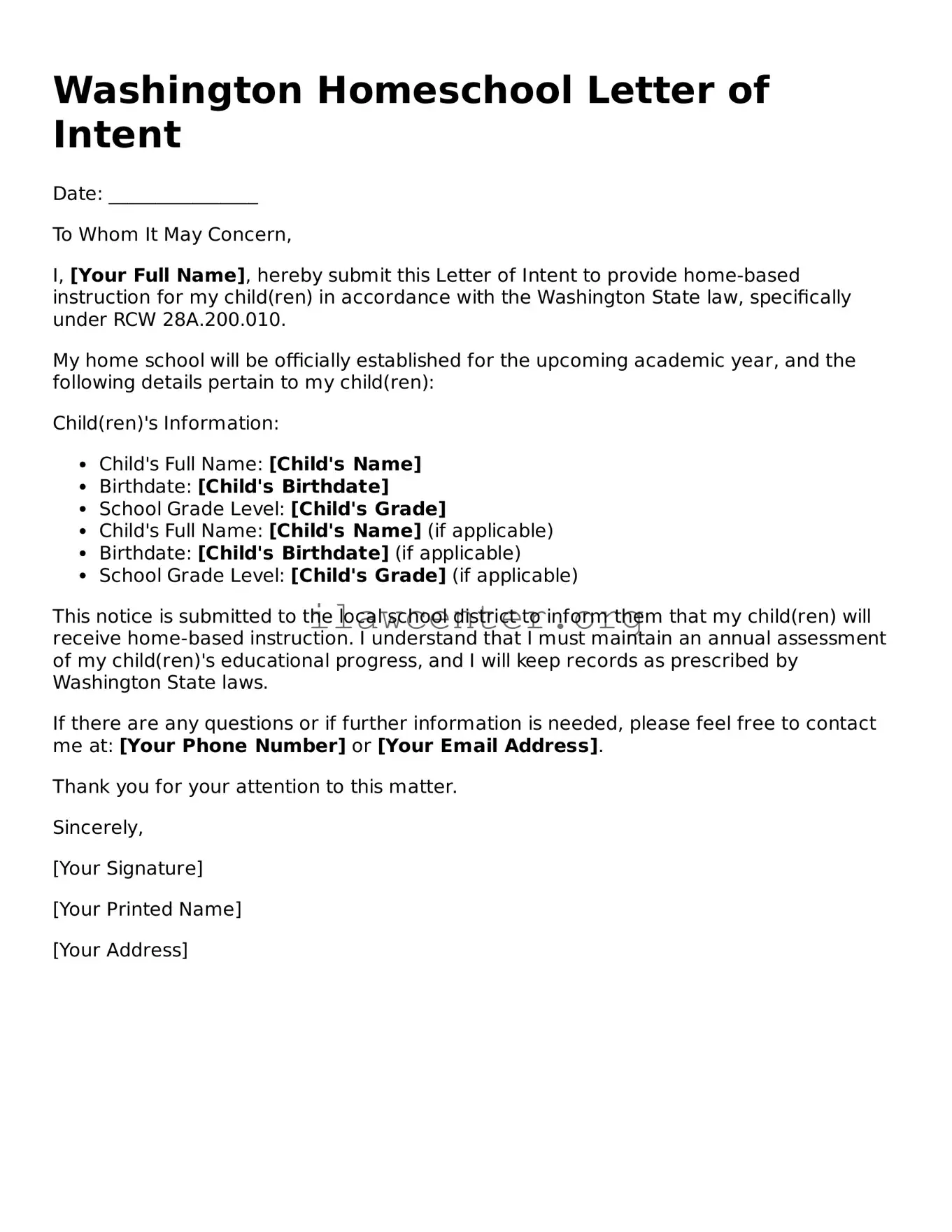Instructions on Utilizing Washington Homeschool Letter of Intent
Once you have decided to homeschool your child in Washington, the next step is to submit a Homeschool Letter of Intent. This form indicates your intention to provide home-based education and must be sent to your local school district within specific timelines. Following the instructions carefully ensures that your form is complete and processed without delays.
- Begin by gathering the necessary information about your child, including their full name, date of birth, and any other identifying details required.
- Clearly state your name, address, and contact information in the designated section of the form.
- Indicate the start date for your homeschooling, marking the beginning of your educational journey.
- If applicable, provide information about the previous school your child attended, including the name of the school and the last grade completed.
- Review the form carefully to ensure that all information is complete and accurate.
- Sign and date the form at the designated area to validate your submission.
- Submit the completed letter to your local school district office, either by mail or in person, within the required timeframe.
